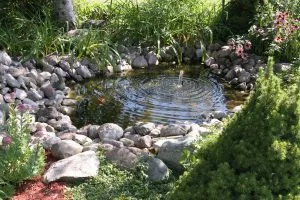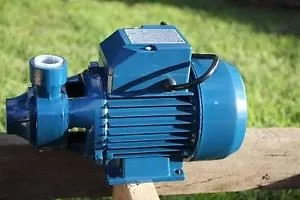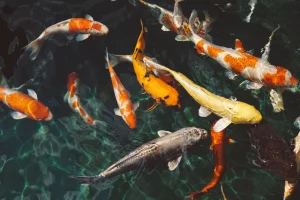
Now that spring is in full effect here at Lane’s Landscaping Supplies, it’s time to bring your private backyard pond back to life.
Of course, after being dormant for the winter, you can’t just fill it with water and turn on the pumps.
You’ll need to give it some TLC before you start enjoying the soothing and relaxing sounds of water again.
Here are some easy-to-follow tips to quickly and easily get your pond back into service.
Tip 1: Inspection
Winter weather, wind, snow and ice may have compromised some interior features of your pond, including:
- The liner wall.
- Water filters.
- Piping products.
- Hoses.
- Natural stone rocks or pebbles.
Plus, if you have mulch surrounding it, you’ll either want to clean that up or replace it altogether.
Before starting any work on your pond, give it a thorough and complete check-up. Remove, repair or replace any damaged pieces you need to.
Tip 2: Cleaning the pond
There’s no getting around it: after winter, your pond is dirty.
And the main culprits are usually:
- Leaves & twigs: Small leaves and twigs can make their way through leaf netting. Some may float, but others may have sunk to the bottom of the pond. Get in there and scoop everything out.
- Natural matter: Plants, topsoil and other debris (even, yuck, animal waste) can leave a sticky layer of gunk in the pond. In order to remove that completely, you’ll need a brush, super-strong sponge and some elbow grease.
Don’t want to manually clean your pond? Consider investing in a pond vacuum to do the job for you.

Tip 3: Pump activation
Remember: Your pond pump has been shut off for the entire winter.
Fortunately, you don’t need to wait until it gets extremely warm to turn it on.
When it reaches 10°C outside (that’s 50°F, by the way), you can start your pump.
After you’ve turned it on, don’t just leave it to run on its own. Actually, you shouldn’t make plans to go out or leave the house. You should be around…just in case.
Throughout the day, go back to the pump and double-check that it’s working properly. If it is, is should be sending water back into your pond.
Tip 4: Cleaning the filter
The pump is running smoothly. But before you really crank things up, you’ll need to clean the filter.
And just like the pond itself, the filter is covered in unwanted items like:
A dirty pump will impact its performance, effectiveness and efficiency.
Don’t use tap or hose water to clean the filter pads, though. Civic water may have chlorine or other additives which may kill off beneficial bacteria.
Tip 5: Testing
It’s a homeowner backyard pond.
But it doesn’t mean it should be filled with nasty or unclean water.
When ready, get a pond-testing kit to look for:
- Ammonia: Koi and other pond fish secrete ammonia via their gills. Too much of it will harm any fish you stock your pond with. It’ll also place added stress on your pond filter.
- Nitrate: It’s not as dangerous as ammonia, but it’s still unwanted. Nitrate can also harm pond fish. To combat this, live plants in your pond will reduce nitrate levels.
Ideally, levels for ammonia and nitrate should be at zero. If not, you’ll need to drain the pond, fill it with fresh water and test it again.

Tip 6: Stocking with fish
Adding fish to your pond is a nice, personalized and exotic touch.
But you can’t (and shouldn’t) just buy and place them in there.
This time of year (spring) is when they’re most at-risk for developing health issues.
Here’s why:
- Going from one water source (say a pet store) to another (your pond) will literally shock their systems.
- New, different water will introduce new sources of bacteria they aren’t equipped to handle; as a result, they may develop infections.
To protect your fish before they enter the water, add some pond salt to it.
Pond salt works as a kind of energy replacement supplement, as fish will lose electrolytes, potassium, sodium, calcium and magnesium when they’re stressed out.
Tip 7: Fish feeding
As spring rolls on, the fish in your pond will get hungry.
When the water temperature in your pond reaches above 10°C outside (again, that’s 50°F) – and remains there – that’s when you can begin feeding your fish.
Make certain you purchase spring fish food. It’s made for the season, has high fat content (which fish need) and is easier for them to digest.
Want to add some great features to go along with your backyard pond?
Get great ideas inside your FREE copy of Turn Your Backyard into the Ultimate Entertainment Hub.
Download your FREE copy now.
Tip 8: Plants in the pond
Over time, the water temperature in your pond will gradually rise.
As it does, you can add new plants to your pond. Or, you can keep the plants which survived the winter in place.
A few things to keep in mind:
- Fertilizing plants: Feel free to do so if you wish, but only use an aqua-friendly fertilizer product.
- Overgrown plants: Divide them (just like you would for your garden) before planting them in your pond.
- Mulch removal: Any mulch that’s found its way into plants or pots should be removed.
Once your plants are in place, make sure to keep an eye on them regularly. Changing water and weather conditions could negatively impact them.
Need help with your pond or backyard landscaping? Contact us
First-time pond builder?
Owned a backyard pond for many years and have some questions about care and maintenance?
Hiring a contractor to help with your backyard pond?
Whatever your pond or backyard landscaping needs are, we have the products and advice you need.
- CONTACT US with any questions you have
- ASK FOR A FREE QUOTE on any products we carry



